Welcome to the first People and Plants GP blog post. These posts, which will be on a random basis, will take a behind the scenes look at the namesake people behind many plant names. This first one will be about Andrew Jackson Downing.
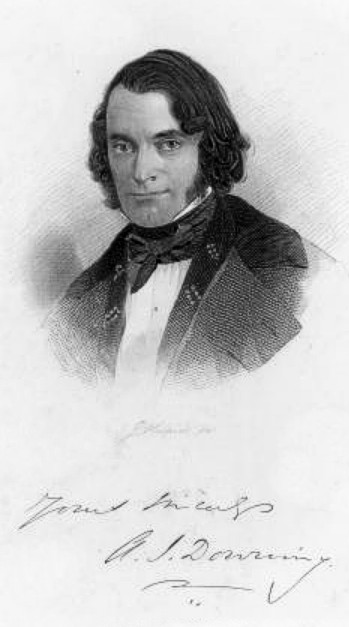
Andrew Jackson Downing was born October 30/31, 1815 in Newburgh, New York to Samuel Downing and Eunice (née Bridge) Downing. His father was originally a wheelwright but later became a nurseryman. After he finished his schooling Andrew worked in his father’s nursery and was soon bitten by “the plant bug”. I’m sure many of us can identify with that “affliction”.
Over time he became more interested in landscape gardening, architecture and the relationship between them. He began writing articles about botany and landscaping but soon realized he needed to know more about both topics and so began a course of self-education. By the 1830’s he was producing pieces for newspapers and hort journals and in 1841 his first book, *A Treatise on the Theory and Practice of Landscape Gardening, Adapted to North America, met with great success. It was the first book of its kind published in the United States.

Downing continued to write on the importance of linking landscaping and architecture and was well thought of in the industry. What really put him on the public gardening radar was a book he and his brother Charles wrote. The 1845 book, The Fruits and Fruit Trees of America, was the most complete one of its kind to date and led to Downing’s becoming the editor of a new periodical, the The Horticulturist and Journal of Rural Art and Rural Taste. The journal came to be his strongest influence on society and operated under the premises of horticulture, botany, entomology, pomology, rural architecture, landscape gardening, and ideas dedicated to public welfare, specifically public parks and what we now call “open space”. As an example he argued for a New York City park, which in time became Central Park, in this journal. It was also in this publication that Downing repeatedly pushed for state agricultural schools.
He held the position of editor until his death in 1852.

Downing was greatly influenced by the British “picturesque” landscape theories of the era. By the time he published the second edition of his Treatise he was a firm believer in the advantages of the picturesque landscape movement. He embraced the use of local landscape features especially “the raw materials of wood, water, and surface” and, when possible, the blending in with the local terrain instead of creating an artificial, out-of-place one. He became the mid 19th century champion of natural style landscapes and helped steer American gardeners away from the more formal, geometric lines that had dominated the 18th and early 19th centuries.
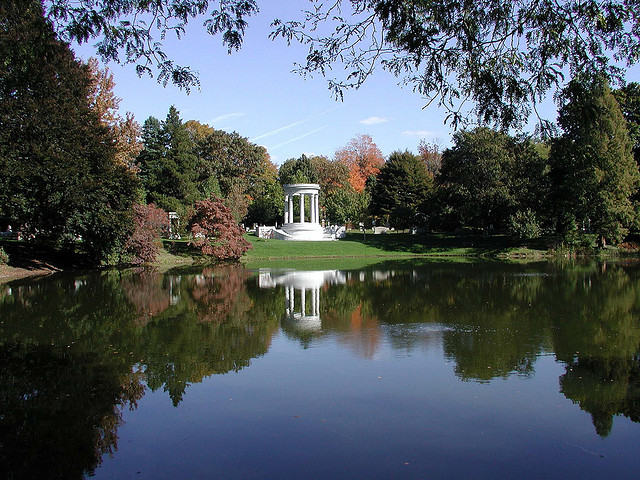
As an editor, Downing repeatedly addressed the importance of urban and suburban public gardens and parks. He felt such spaces would aid in the fostering of moral and civic virtues in the American public. In the October 1848 Horticulturist editorial “A Talk about Public Parks and Gardens,” Downing wrote that public parks would play an important role “in elevating the national character.” He also believed interacting with nature had a healing effect on mankind, wanted all people to be able to experience nature and felt city parks were vital in helping maintain a healthy community.
Downing had a wide audience through his books and editorials in the Horticulturist but his influence went beyond the readership of his publications. Private and public gardens and city parks that proliferated through out the USA during the mid 1800’s owed their existence to his ideas.
Downing did much more than this blog post will discuss so let’s move on to the plant.
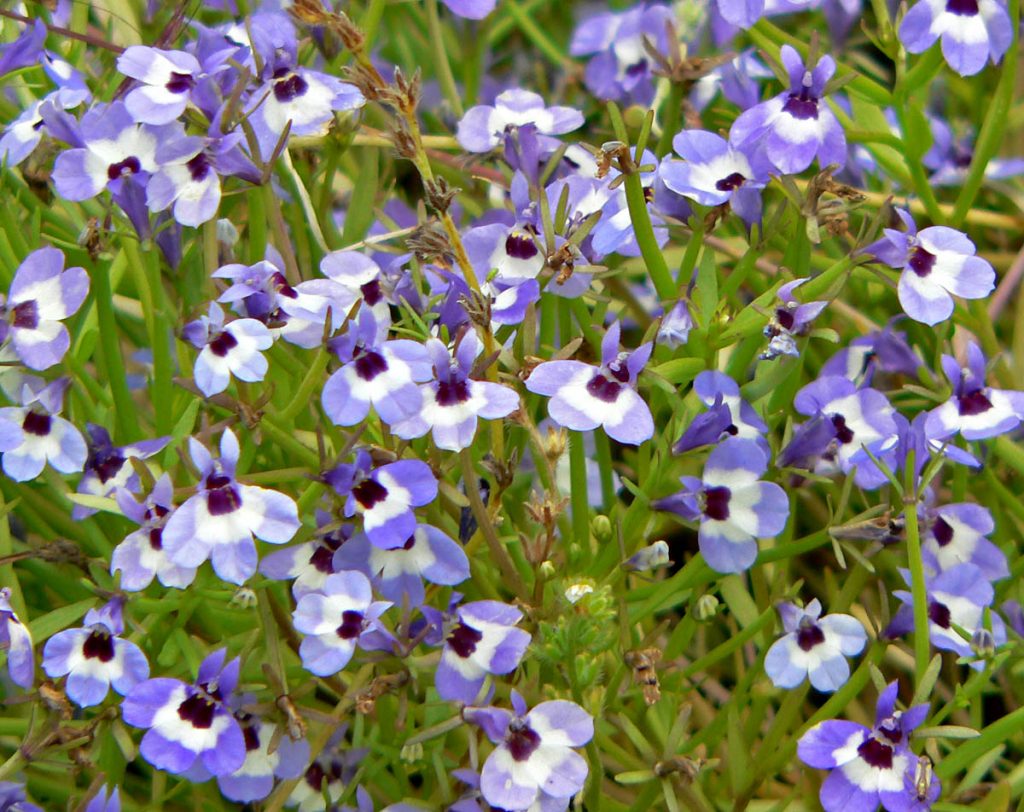
The genus **Downingia is named after Andrew Jackson Downing. It contains 13 annual plants which are native to the western USA and Chile. Commonly known as calico flowers, they are noted for forming large displays of small colorful blooms around seasonal or ephemeral pools of water. Interestingly each pool will usually only host one or two species of Downingia even in areas where multiple species exist.
It’s a member of the bellflower family and the plants are 3-10″ tall. Flower size varies but each flower has five corolla lobes or petals. The two upper petals are smaller than the three lower ones. Coloration is mainly blue/purple/pink with a little white, yellow, and black.
Downingia must cross-pollinate. To prevent accidental self-pollination, the flowers mature in stages, they go from male to female. This change is time coordinated across each patch of flowers. How this is done is still unknown.
The species is pollinated by native solitary bees.
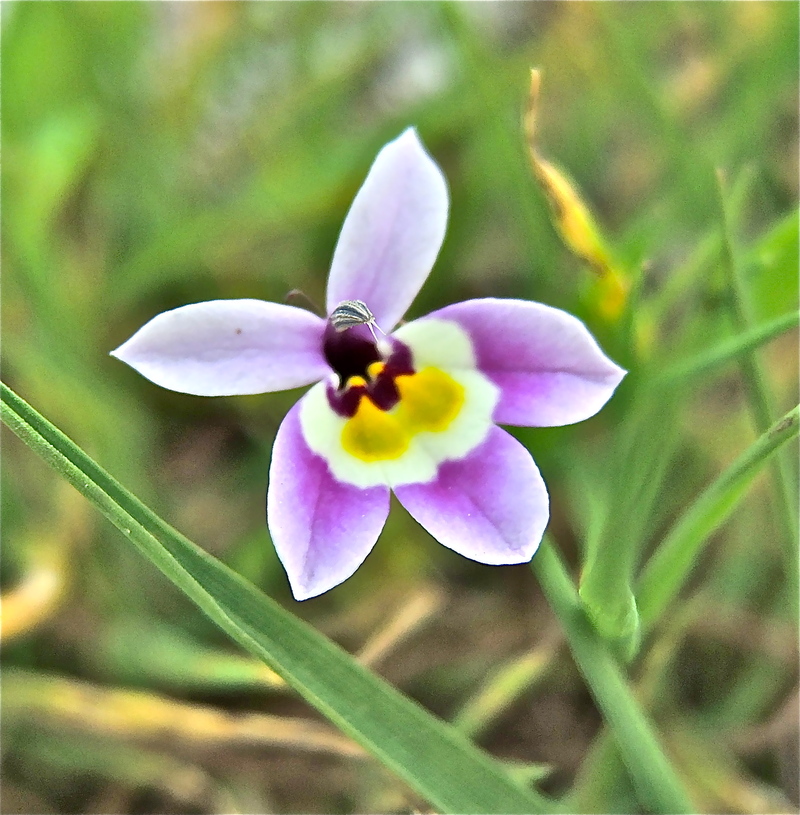
Photo by John Doyen
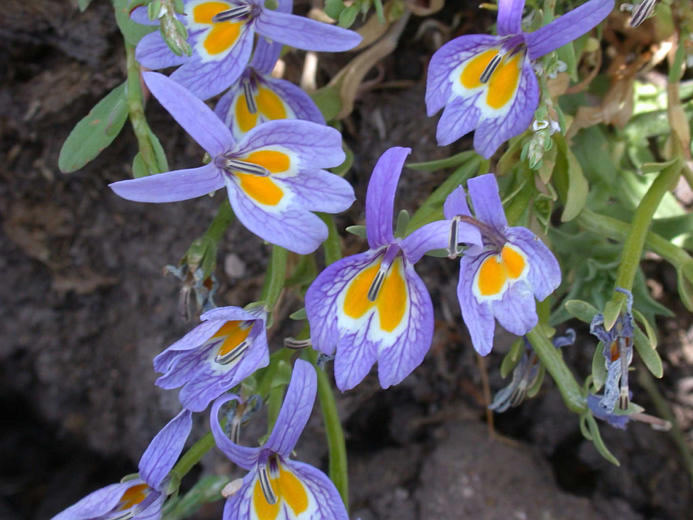
Photo by Gary A. Monroe
*https://openlibrary.org/works/OL1471543W/A_treatise_on_the_theory_and_practice_of_landscape_gardening?edition=treatiseontheory01down
**https://www.wildflower.org/plants/search.php?start=0&pagecount=10
Thank you!
Really enjoyed reading this post. Gardening has its history.